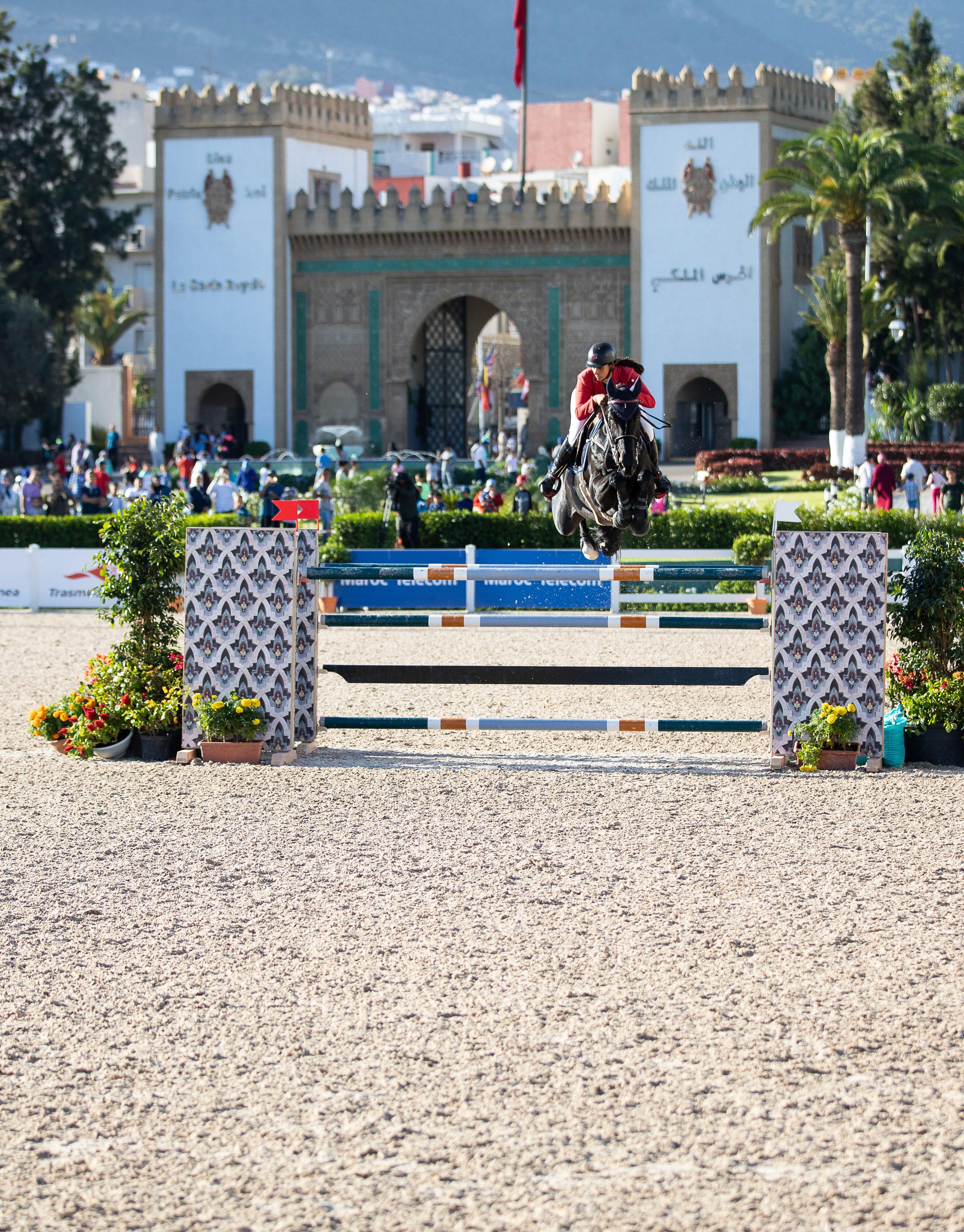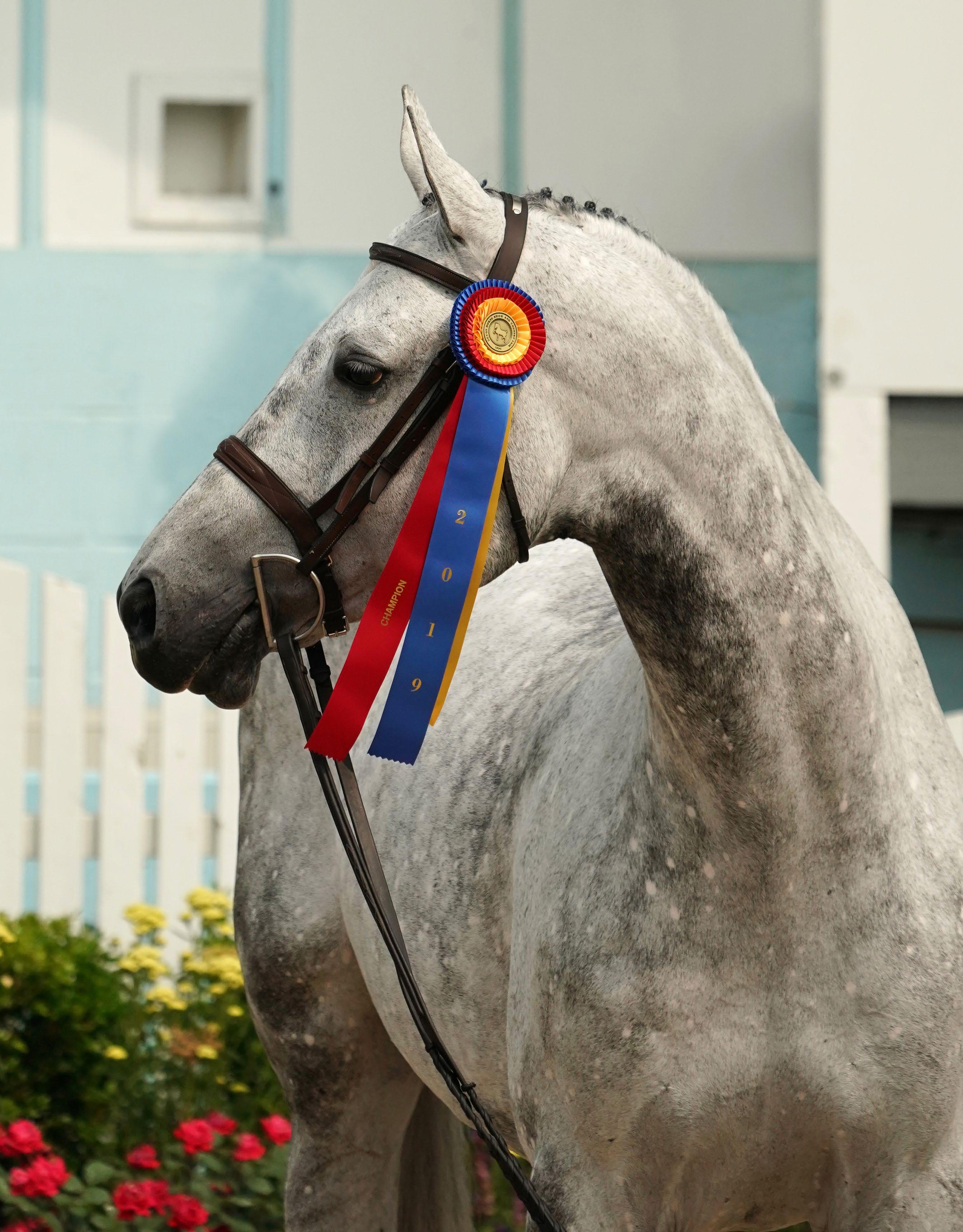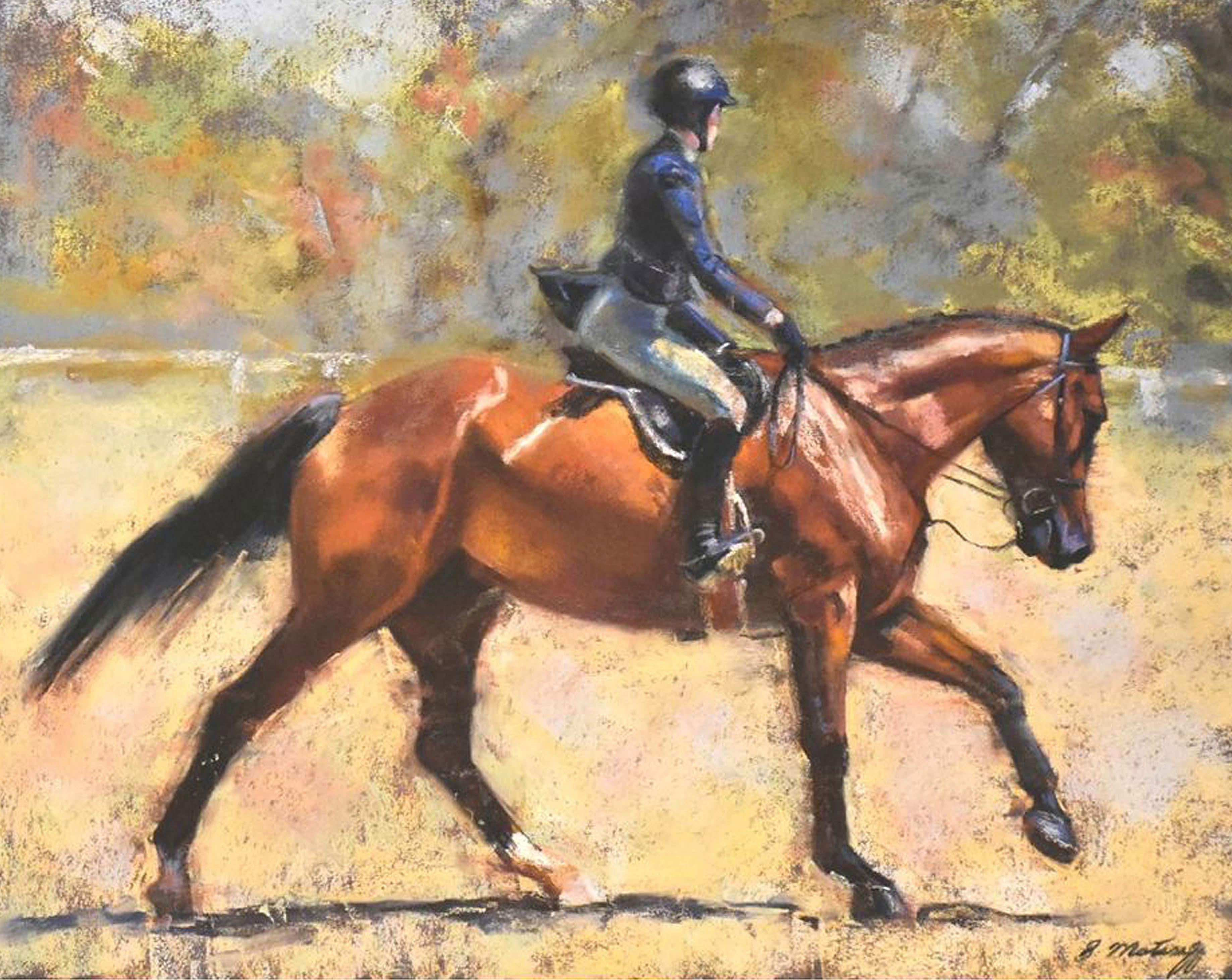
6 minute read
CURATED BY AN EQUESTRIAN
Sharon Matisoff
How many of us know our life’s passion even before we are old enough to formulate such a thought? As a preschooler with a chubby piece of pastel in her hand, Sharon Matisoff was already on her path. “Pastel was my first language,” she tells us. “My mom painted for pleasure, and pastels were her medium. I thought it was magic that she could translate a face.” She was Matisoff’s first art teacher, and faces were her first subject.

Sharon Matisoff, artist
“ I ’ve always been a people-watcher,” she says with a smile. “I find people fascinating; I love watching their faces and gestures.” When she finds a face that interests her, she paints it. “When I was a kid,” she says with just a touch of shyness, “I felt like I was creating a friend.”
Raised in Los Angeles, she learned to draw in school, and though she knew she would paint for the rest of her life, she was convinced that it couldn’t be a career. “So,” she says, “I graduated California State University, Northridge as a psychology major, and found it to be a degree that prepares you for nothing.” Post-graduation, she prepared herself to work as a word processor, which she did most of her adult life, while painting at night.
At one point, she decided to take an art class (“I wanted to see what I was missing.”) It was an evening class at Pierce Junior College (Woodland Hills, CA), and the instructor opened with one of those goofy “get-toknow-each-other” games that put the students in a circle looking at each other and feeling foolish. The instructor then rearranged the circle, telling everyone where to stand. A young man named Marty was placed next to Matisoff, and they recently celebrated their 37 th anniversary. Both dropped the class – too silly – but it was certainly not a waste of time! new. A love of all animals had always been part of who she is, so the two became interested in raising alpacas. Kentucky seemed a good place to do that, so they moved from Orange County, California to Brandenburg, Kentucky, challenging themselves with more of a culture shock than they could have imagined. Realizing they were not farm people, they ended up in Louisville, and then Frankfort, Kentucky, where Marty went to work at Kentucky State University. Sharon retired and, for the first time in her life, was free to just paint.
Many of the equine artists that have been featured in our “Curated by an Equestrian” articles began as horse girls (or boys), having always had horses as a part of their lives. Not so with Matisoff. Though she always loved animals and appreciated the beauty of the horse, her introduction to living, breathing horses came later.
An associate of Marty’s at KSU, Dr. Marion Simon, raises halter horses, western performance horses, racing quarter horses,
“Bill Evans”
Matisoff did go back and take other art classes to hone her skills, and then was confident enough to apply for a head painting class at night at Art Center College of Design in Pasadena, CA. Thrilled to have been accepted, she immersed herself in life drawing. These classes, with models posed in the center of the classroom, challenged the students to capture the likeness within a short time limit. For Matisoff, it was important to capture more than just the likeness; she wanted to capture the gesture imbedded in the pose.
“No matter where you are in the circle of easels around the model, it’s important to get down what you see, which also requires a knowledge of foreshortening (the angle where the weight is balanced) and the ability to use it.” and barrel racers; and she invited them to come out to her farm.“It was the first time I had ever touched a horse, smelled a horse!” she says, wonder in her voice. She was hooked; it was an awakening that changed her life. It was 2015, and she knew that this would be her work and her passion for the rest of her days.
Dr. Simon taught her about the physiology and behavior of horses, whetting her appetite to learn more. She immersed herself in finding out everything she could about horses, their anatomy, their movements, their energy, their faces, their personalities. “I knew I had good painting skills, but learning to paint horses is a whole new world,” she says with palpable excitement. “There were technical aspects to learn; legs are the hardest things to do.”
Equine artist Xochtil Barnes, from American Academy of Equine Arts, helped her learn, via phone and email, to see horses from an artist’s perspective. “She saw my first attempts at painting horses and offered
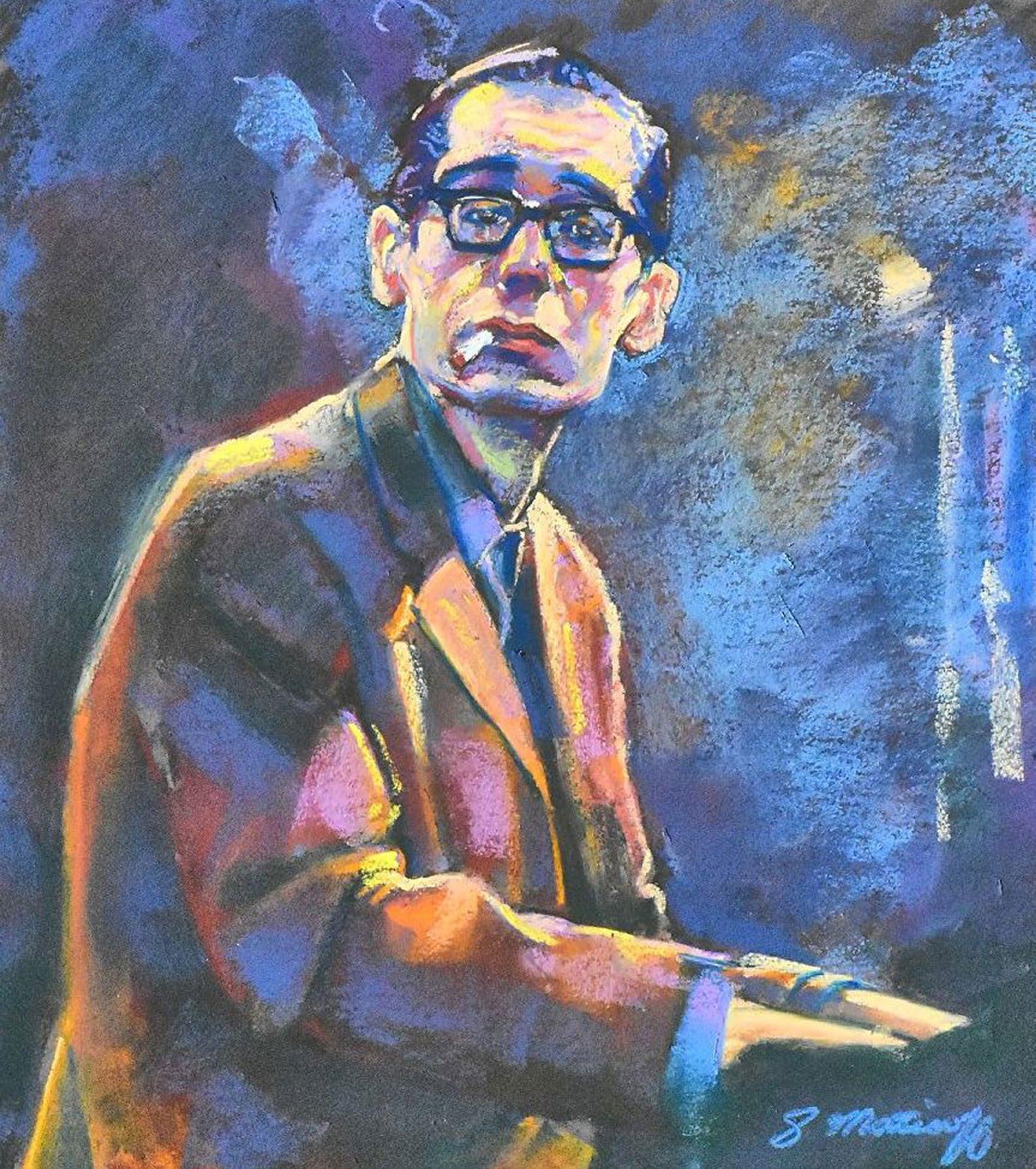
H&S wondered what brought her to Kentucky. Marty’s job was ending and Matisoff’s company was sending word processing jobs out of the country, so they decided they were ready for something
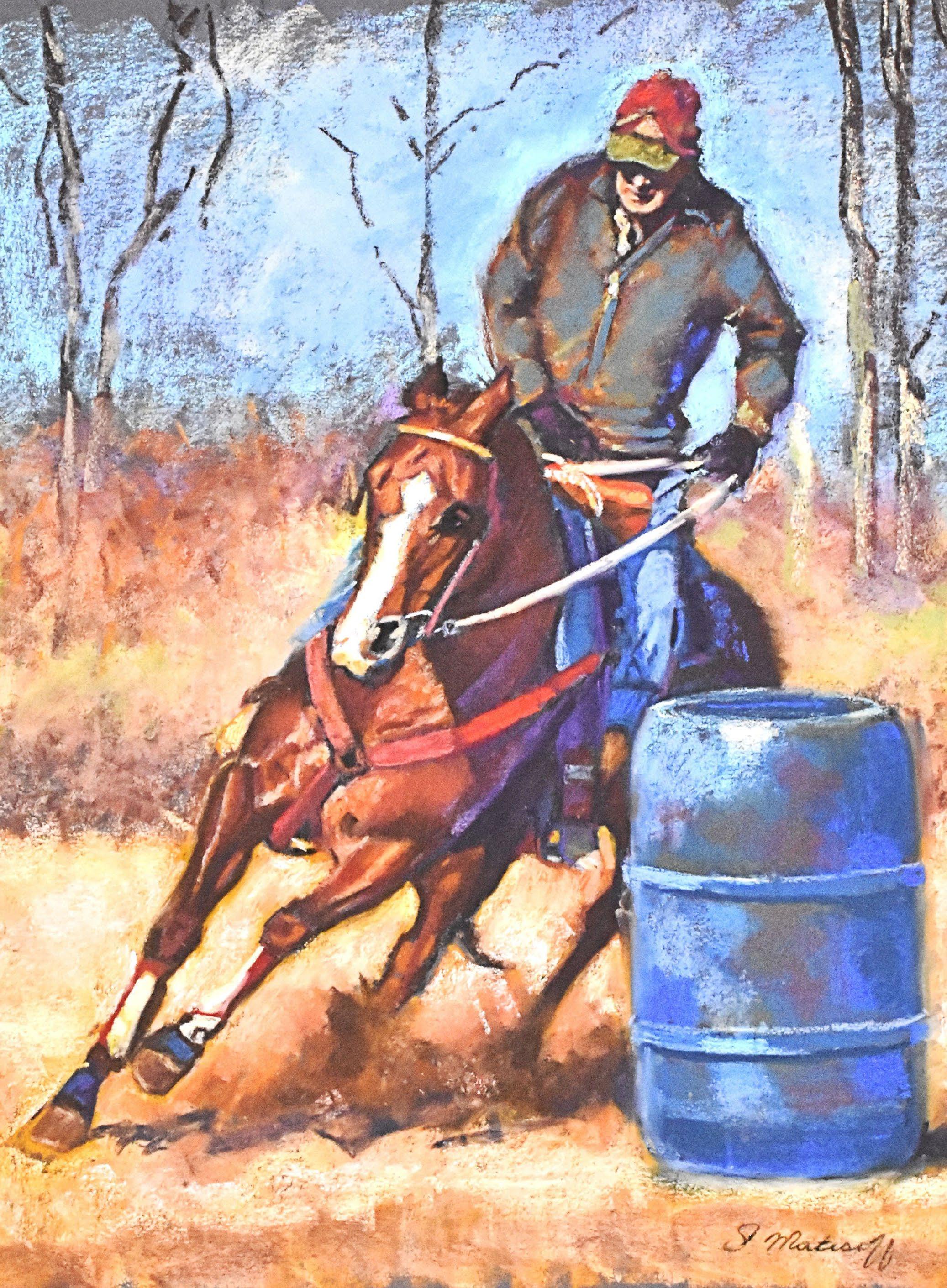
wonderful suggestions that immediately improved my work, all the while remaining supportive and encouraging.”
Matisoff struggled for two years to get things right. “A painting is a likeness, of course; but painting is also interpretation. I had to make my horses come alive, so I painted them in motion.” Finally came the painting that was the apex, the one she felt she could look at and say “Damn, that’s good!” Before the Race was her first professional-quality painting. It was indeed alive and in motion. She was an equine artist.
She refers to her style as Impressionist/ Realist, a term she coined herself. “A true Impressionist doesn’t use black,” she says, “nor am I exactly a realist, because I exaggerate colors and motion. I find myself heading more into the Impressionist realm as my work gets looser and more colorful. I want the viewers to feel the horse coming at them; I want my paintings to breathe.” She prefers to work from her own photographs of horses, which she takes when she goes to places like Keeneland or the Kentucky Horse Park in Lexington. “I want, in everything I do, to be doing something I’ve never done before. I want to keep learning and pushing.” And nowhere is that more apparent than in her ongoing, enthusiastic hunger to learn all she can about horses.
What artists have influenced her? “I respect equine artists so much. I didn’t just do this without help from all the great artists out there. Sir Alfred Munnings was the first one whose work really showed me how to interpret a photograph, how to make the scene come alive. He has such an eloquent brush stroke, including his rendering of the background. His every stroke has a reason for being there.”
Among contemporary artists that inspire her, she lists Andre Pater, Jill Soukup, and Jean-Bernard Lalanne, among others. “The first time I saw an Andre Pater, it just knocked me flat. His colors and compositions are breathtaking.” Western artist Jill Soukup paints buffalo, horses, and people. “Her horses breathe. Studying her work, I learned how to use a brushstroke or a smear with a palette knife to show motion.” Jean-Bernard Lalanne is another huge inspiration. “He paints every subject, and his horses and people are some of the best I’ve ever seen.” There were many others, as well as portrait artists – sadly, too many to include in this story.
Sharon Matisoff is contemplating 2020 with great excitement. “People started buying my work in 2019,” she says, and journalists began to discover her. She was featured in two Kentucky magazines. “All the best things I’ve done as an artist are tied in with horses. I finally started feeling that this is really meant to be; this is what I’m supposed to be doing,” she said, eyes shining. “I’ve never been so happy; I feel so fulfilled. I wake up in the morning excited about painting.”
Once again, horses have worked their magic in someone’s life.
Learn more at sharonmatisoff.com

“Before the Race”


